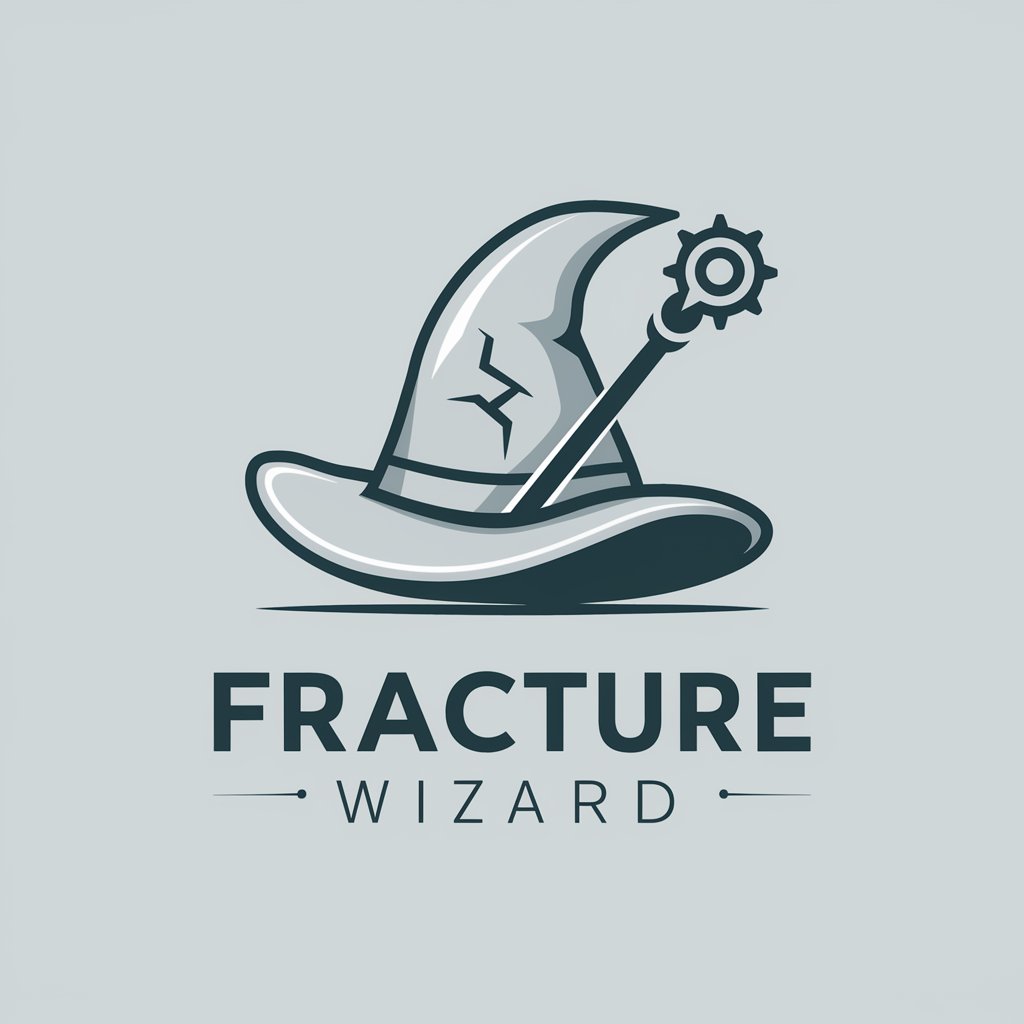Fracture Analyst - AI-powered fracture analysis

Welcome to Fracture Analyst, your orthopedic support tool.
Transforming fracture diagnosis with AI
Describe the type of fracture and its location on the x-ray image.
What symptoms are present alongside the suspected fracture?
Detail any recent trauma or injury that could have caused the fracture.
Have there been previous issues or surgeries in the affected area?
Get Embed Code
Overview of Fracture Analyst
Fracture Analyst is a specialized tool designed to assist orthopedic professionals by providing preliminary assessments of fractures based on x-ray images and descriptions. This tool integrates with the AO (Arbeitsgemeinschaft für Osteosynthesefragen) Foundation's guidelines to suggest possible classifications and treatment approaches. The primary aim is to enhance the efficiency and accuracy of initial fracture evaluations in clinical settings, serving as an educational and informative resource. For example, an orthopedist could upload an x-ray image of a tibial plateau fracture, and Fracture Analyst would provide a suggested classification based on the Schatzker system, along with applicable treatment options like surgical methods or conservative care, depending on the fracture's severity and characteristics. Powered by ChatGPT-4o。

Core Functions of Fracture Analyst
Fracture Classification
Example
Using AI algorithms, Fracture Analyst can analyze x-ray images to classify the type of fracture, such as identifying a femoral neck fracture as Type I, II, or III according to the Garden classification.
Scenario
In an urgent care setting, a physician receives an x-ray of a patient with hip pain after a fall. By uploading the image to Fracture Analyst, the physician quickly receives a fracture classification, aiding in swift decision-making about the need for possible surgical intervention.
Treatment Suggestion
Example
Based on the fracture type and severity, Fracture Analyst suggests treatment options, such as recommending ORIF (Open Reduction and Internal Fixation) for complex distal radius fractures.
Scenario
In a hospital emergency department, a resident unfamiliar with the latest treatment protocols uses Fracture Analyst to verify the most appropriate treatment for a newly admitted patient with a complex ankle fracture. The tool's suggestions help the resident prepare for discussions with the surgical team.
Educational Resource
Example
Fracture Analyst provides explanations of different fracture types and treatments, complete with visual aids and references to current guidelines.
Scenario
During a medical education seminar, a lecturer uses Fracture Analyst to show real-time examples and treatment guidelines, enhancing the learning experience for orthopedic residents.
Target User Groups for Fracture Analyst
Orthopedic Surgeons
Orthopedic surgeons can utilize Fracture Analyst to quickly assess fractures, verify their own evaluations, and plan surgeries or other treatments. The tool's integration with current guidelines helps in maintaining the standard of care.
Emergency Room Physicians
ER physicians often face a high volume of patients with various injuries, including fractures. Fracture Analyst aids them in making rapid, informed decisions about fracture management, which is critical in the fast-paced environment of an emergency room.
Medical Educators and Students
Educators and students in medical fields benefit from Fracture Analyst as a teaching tool that provides real-time data and visual aids to enhance understanding and retention of orthopedic principles and treatments.

How to Use Fracture Analyst
1
Visit yeschat.ai to start using Fracture Analyst for free without needing to log in or subscribe to ChatGPT Plus.
2
Upload an X-ray image of the suspected fracture area using the secure file upload feature on the platform.
3
Provide a brief description of the patient’s symptoms and any relevant medical history that may assist in the analysis.
4
Review the preliminary assessment provided by Fracture Analyst, which includes potential fracture identification and classification according to AO guidelines.
5
Use the information as a reference to aid in treatment planning, but always consult a medical professional for final diagnosis and treatment.
Try other advanced and practical GPTs
Clavicle fracture assistant
Streamline Your Clavicle Fracture Research

Fracture Advisor
Optimizing fracture care with AI

Fracture Wizard
Master Fracture Mechanics with AI-Powered Flashcards

Fundamentals of Fracture Mechanics Tutor
Master Fracture Mechanics with AI

Care Companion from Fulcrum (BETA)
Streamlining Care Home Management

Grade Master
Automate grading with AI precision

X-Ray Fracture Specialist
Transforming fracture detection with AI power.

Kotlin Supercharged ⚡️
Elevate your Kotlin code with AI power

PHP Supercharged ⚡️
Optimize your PHP with AI power.

Go Lang Supercharged ⚡️
Empower your Go code with AI

Memory Supercharger🧠⚡
Enhance Your Memory with AI

Python Supercharged ⚡️🐍
Empower Your Code with AI

Frequently Asked Questions About Fracture Analyst
What types of fractures can Fracture Analyst identify?
Fracture Analyst is capable of identifying various types of bone fractures, such as simple, compound, transverse, oblique, and comminuted fractures, using X-ray imaging.
Is Fracture Analyst suitable for monitoring fracture healing?
Yes, Fracture Analyst can assist in monitoring the healing process of fractures by comparing sequential X-ray images over time to observe changes and improvements in bone healing.
Can Fracture Analyst be used in emergency settings?
While Fracture Analyst can provide rapid assessments, its use in emergency settings should be as a supplementary tool, with final decisions always made by qualified medical personnel.
How accurate is Fracture Analyst?
Fracture Analyst offers high accuracy in fracture detection and classification based on the training data it has been provided, but it should not replace professional medical diagnosis.
What are the system requirements for using Fracture Analyst?
Fracture Analyst is accessible via web, requiring only an internet connection and a device capable of accessing the browser and uploading images. No specific hardware or software installations are necessary.
